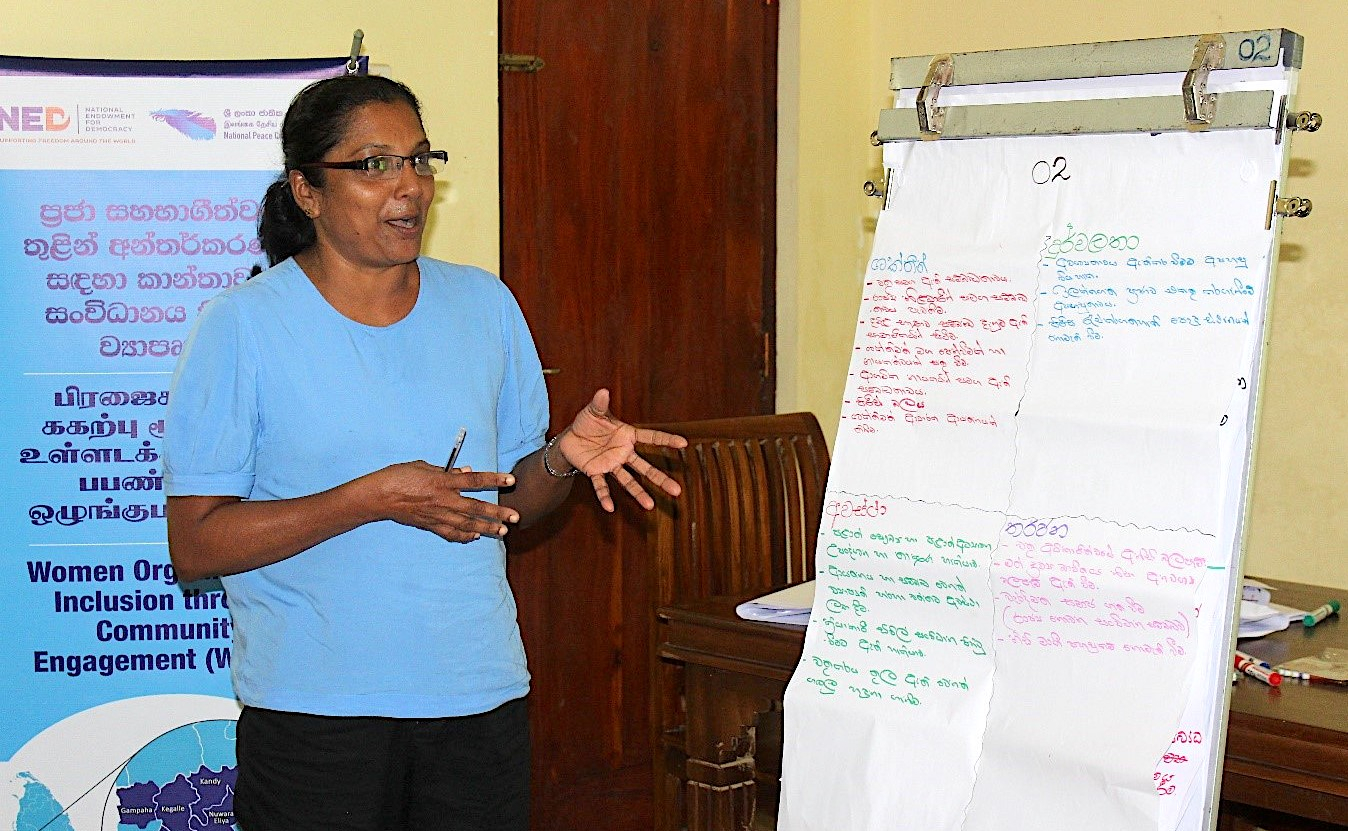Problem mapping is a technique used to analyse and understand complex problems by breaking them down into smaller components, figuring out the relation between these components, visualising and choosing what component to prioritise first. Mapping community problems is important to identify root causes and actual issues that are related to democracy and the vulnerability of women. Under NPC’s Women Organized for Inclusion through Community Engagement (WOICE) project, problem mapping discussions were held in the Matara, Monaragala, Nuwara Eliya, Kandy, Ratnapura, Gampaha and Kegalle districts with the participation of 35 female supergroup members and 140 female peer group members in each district.
The sessions showed that through conducting a problem analysis, understanding the root causes using the problem tree analysis and looking at Strengths, Weaknesses, Opportunities, and Threats (SWOT), supergroup and peer group members are able to plan their responses strategically. Supergroup members identified their formation as the main strength. They see themselves as a strong group with different types of knowledge, skills and capacities with a commitment to promote democracy and find solutions for their problems. They have strong networks with government officials, civil society organizations, community organizations and local level politicians that are a strength for them when it comes to resolving problems.
“As a women leader, it is important to identify our problems in order to plan solutions. Women are facing different kinds of problems starting from the economy and finance to psychosocial wellbeing. Sometimes we address issues without having a proper reading of the root causes and consequences. This discussion provided a clear understanding of our problems and how to prioritise the most relevant and important issues. Violence against women was identified as an important issue that needs to be considered,” said a peer group member from the Ratnapura District.
Receiving support from government institutions for partner organizations and having government officials and local level female political leaders in the peer group who could extend support for women's groups were identified as key opportunities. The group realised that weaknesses and threats could transform into strengths once they used methods to overcome them during solution planning and implementation.


